What Is A Septic System?
A septic system is designed to collect, breakdown, and safely disperse wastewater from your home. Septic systems are called many different things: Holding tanks, Cesspools, Septic systems, and Individual on-site sewage treatment systems. Presently, individual on-site sewage treatment systems, is the term more commonly used within the professional community. There are many different configurations that can be used; below is a breakdown of the most common types of septic systems.
Holding Tank
Septic systems consisting only of a holding tank that do not have either a drainfield or mound system. Truthfully, holding tanks are not considered septic systems, and are used only under certain circumstances. Wastewater enters the holding tank and stays until removed by cleaning/pumping the tank. The capacity of holding tanks varies greatly depending on application.
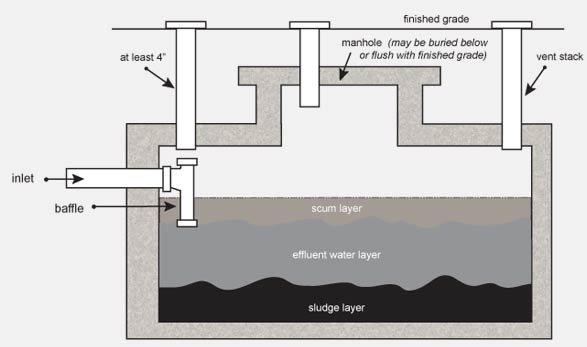
Cesspool
Septic systems built before 1973 are generally referred to as a cesspool. Cesspool tanks were built from perforated blocks with a dirt bottom, to allow effluent water to seep out through the sides and bottom. Cesspools are no longer installed and are considered inferior. The state considers these types of tanks prime contributors of groundwater pollution. The capacities of these tanks are generally between 500 gallons to 1000 gallons for each tank. A drainfield may or may not accompany a cesspool.
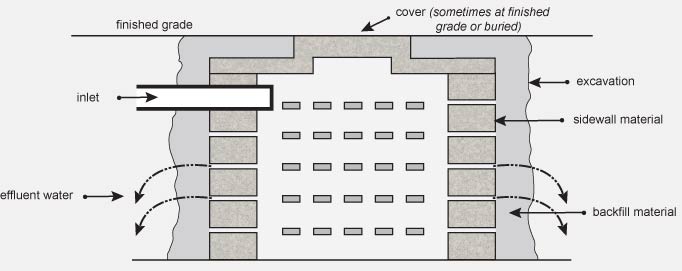
Septic Tank
Septic systems built from 1974 to present are precast concrete, fiberglass, or plastic tanks. Under normal operating conditions these tanks operate full with the wastewater taking on three characteristics: scum layer, effluent water layer, and sludge layer. Each tank has a manhole and at least two baffles. The baffles separate the solids from the effluent water. The capacities of these septic tanks vary between 1000 gallons to 2000 gallons. These tanks are always accompanied either by a drainfield or mound system.
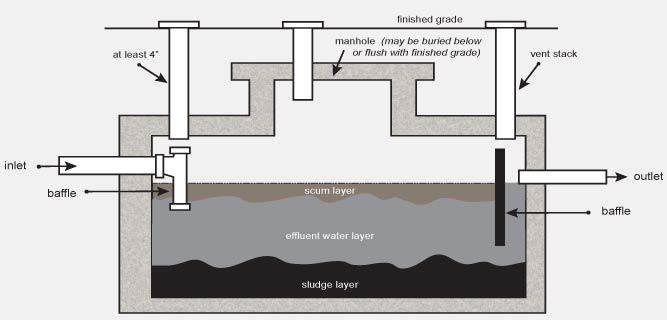
Split Compartment Septic Tank
Septic systems built after 1996 are built and operate the same except for one major difference. These tanks have a wall in the tank. The wall acts like a barrier forcing the solids and sludge to stay in the inlet side of the tank, while effluent water flows into the second compartment, eventually flowing to the drainfield or lift tank. Some common names associated with these tanks include: split compartment tanks or split tanks. Split compartment tanks most often have a total capacity of 1500 gallons, 1650 gallons, or 2000 gallons. These tanks are always accompanied either by a drainfield or mound system.
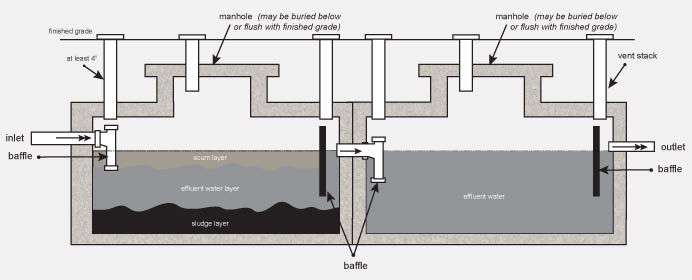
Drainfields
Drainfields treat the effluent water after leaving the septic tank or cesspool. These systems consist of trenches that are gravity fed.
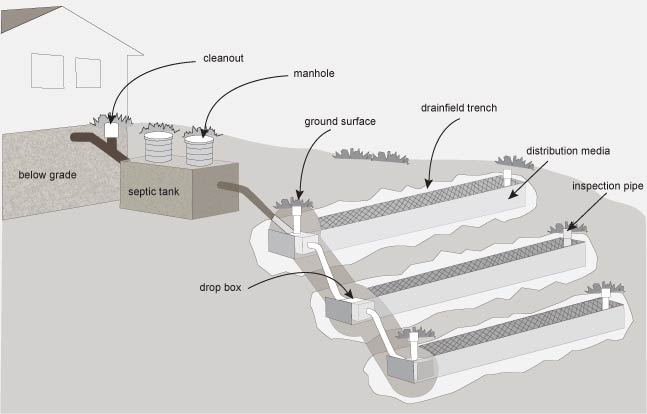
Mound Systems
Mound systems operate the same as drainfields except they are not gravity fed. Mound systems are drainfields elevated above the septic tank and buried in a mound of imported material. Between the mound and septic tank is a lift station. The lift station is equipped with a pump that distributes the effluent water to the mound for treatment.
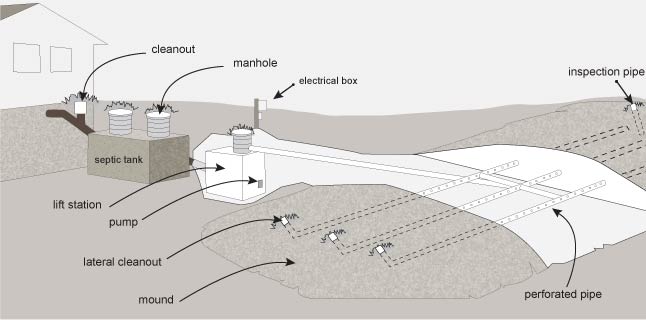
We feel that every time a septic tank is pumped/cleaned, the entire tank should be emptied and properly disposed. Below is a friendly guide to basic septic tank capacities based on the size of the home.
Note: Capacities of commercial and industrial tanks vary greatly. The following guide pertains only to septic tanks of residential homes.
1200 gallons :: 1 to 3 bedroom house
1500 – 1650 gallons :: 4 bedroom house
2000 gallons :: 5 bedroom house
2500 gallons :: 6 bedroom house
500 – 2000 gallons :: lift stations
Any house built after 1996 has a minimum capacity of 1500 gallons
To find out more about how to care for your septic system, see our Septic Care page
For more general information or details about septic systems or our industry check, out the link below…..its one of our favorites!!
